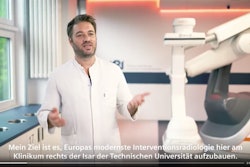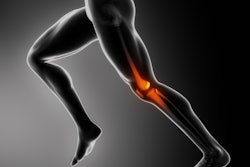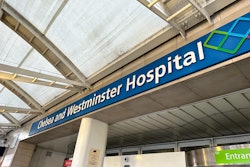The 105th German Congress of Radiology, RöKo 2024, takes place in Wiesbaden from 8 to 10 May under the title of "Radiology in Transformation." But what do you know about the host city? We've put together a list of significant facts about Wiesbaden and places to discover.
- It's the wine country state capital
With 279,000 inhabitants, Wiesbaden is the state capital of Hesse. It is located near Frankfurt am Main in the Rheingau wine region, known for its scenic vineyards and high-quality riesling wines. The city's history dates back over 2,000 years, making it one of Germany's oldest settlements.
- The RheinMain Congress Center (RMCC) is a landmark
Wiesbaden hosts numerous international events throughout the year, attracting professionals from around the world. RöKo 2024 will take place in the RMCC. Named after the Rhein and Main rivers, the RMCC is situated in the heart of the town.
 The main entrance hall during the 104th German Congress of Radiology, RöKo 2023. Courtesy of the German Radiological Society (DRG).
The main entrance hall during the 104th German Congress of Radiology, RöKo 2023. Courtesy of the German Radiological Society (DRG).
- Famous thermal springs
Wiesbaden is renowned for being one of Europe's oldest spa towns with a long history of health tourism. Twenty-six thermal springs have attracted visitors since ancient Roman times. Known for their high sodium chloride content and temperatures ranging from 47° C to 67° C, these mineral-rich waters are revered for their healing properties, offering relief for a multitude of ailments. Visitors from far and wide are drawn to Wiesbaden to immerse themselves in these rejuvenating waters and indulge in the city's serene spa destinations like the Kaiser-Friedrich Therme (bathing naked and with lots of pillars, just like the ancient Romans).
- Kurhaus
The Kurhaus stands as a neoclassical marvel, embodying the city's elegance and grandeur. This architectural masterpiece, constructed in the 19th century, serves as a symbol of the city's rich cultural heritage. With its ornate façade and majestic interiors, the Kurhaus has long been a hub for social gatherings, cultural events, and entertainment. Its opulent ballrooms, exquisite galleries, and stunning concert halls have hosted performances by artists and dignitaries from around the world.
- Art Nouveau
Art Nouveau emerged in the late 19th and early 20th centuries, particularly flourishing in Europe and the U.S. Seeking to break away from academic traditions of the 19th century it embraces a modern approach to design, encompassing various art forms, including architecture and visual arts. In Wiesbaden, traces of Art Nouveau grace the city's architectural landscape with subtle yet captivating allure, notably in areas such as the Dichterviertel and Rheingauviertel.
- Marktkirche
Another landmark of Wiesbaden is the Marktkirche (Market Church), a historic Protestant church in Wiesbaden's city center. The striking red building, distinguished by its soaring towers stands as a prominent example of neogothic architecture. Constructed between 1853 and 1862, the Marktkirche replaced the city's main church, which was destroyed in a fire. The west tower marks the church as the tallest building in Wiesbaden, offering a stunning sight.
- Taunus Mountains
North of Wiesbaden and northwest of Frankfurt am Main, Germany's economic capital, lies the Taunus, a picturesque low mountain range. Characterized by its rolling hills, the Taunus stretches over approximately 80 km. Its highest peak, the "Großer Feldberg," rises to 878 meters above sea level. Beyond offering stunning hiking opportunities, the Taunus is dotted with charming villages and cultural attractions such as medieval castles and Roman ruins.
- Museum Wiesbaden
In the city's museum, art aficionados can immerse themselves in an impressive collection, featuring masterpieces by renowned artists such as Rembrandt, Rubens, and Monet. Those with a curiosity for the natural world can embark on a journey through the natural history section. Currently, the museum hosts an exhibit on the cultures and nature of southern Africa.
- Café Maldaner
Established as Germany's first original Viennese coffee house in 1859, Café Maldaner is known for its ambiance and pastries. With its ornate décor and cozy seating areas, the café exudes a timeless charm for a leisurely breakfast or an afternoon pick-me-up.
- Wohnzimmer
The Wohnzimmer bar is famous for its creative cocktails. Meaning "living room" in English, the Wohnzimmer aims to create an environment where every guest can unwind and feel at home. Its stylish and eclectic décor, complemented by subtle lighting, sets the scene for a casual evening enjoying live music or a good DJ set. It's the ideal spot for a laid-back evening after an action-packed day at the RöKo 2024.
With a focus on recent technological advancements in the field, including the integration of AI technology, this year's RöKO promises to delve into the forefront of radiological innovation and its implications for the future of healthcare.



















